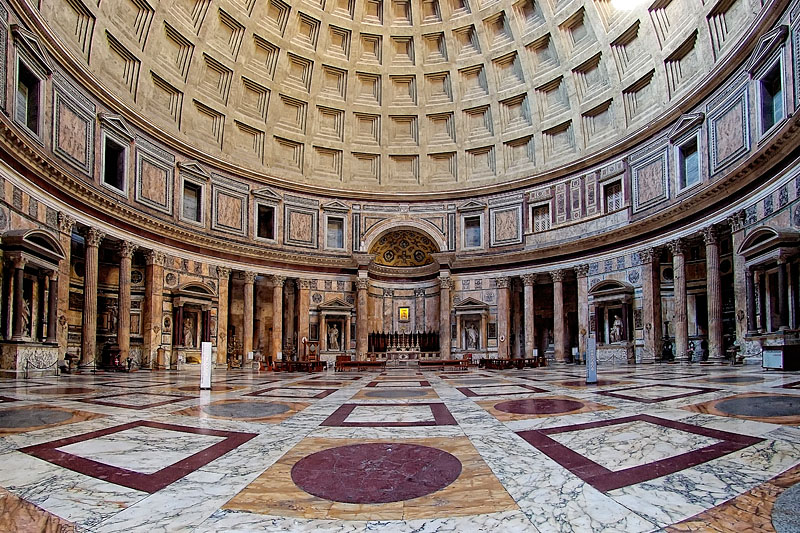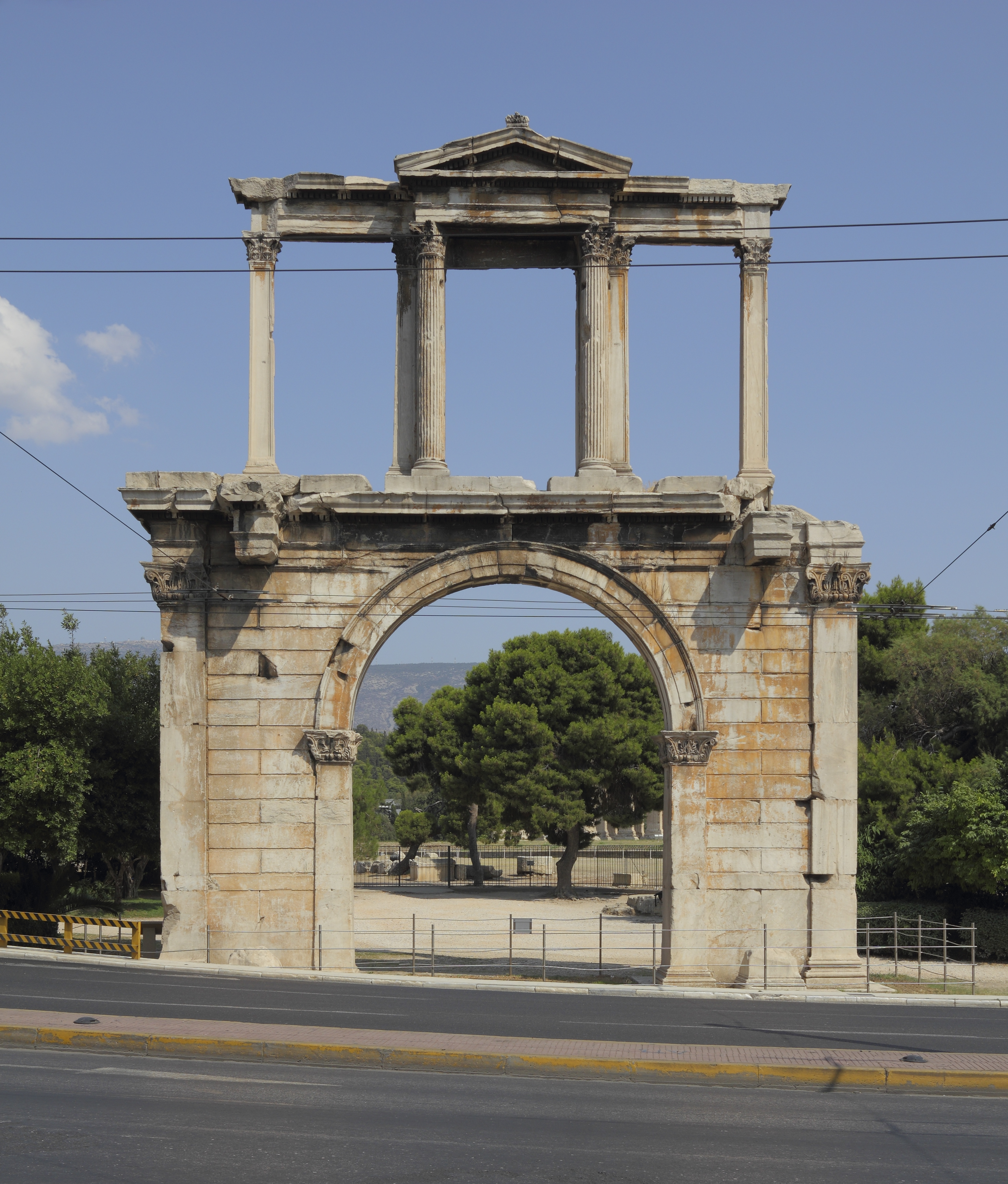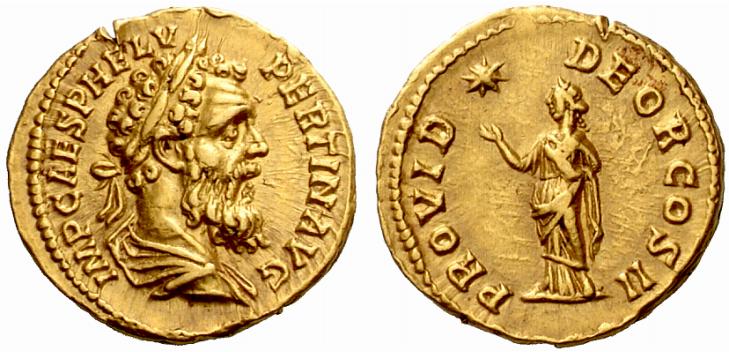|
AD 126
Year 126 ( CXXVI) was a common year starting on Monday of the Julian calendar. At the time, it was known as the Year of the Consulship of Verus and Ambibulus (or, less frequently, year 879 ''Ab urbe condita''). The denomination 126 for this year has been used since the early medieval period, when the Anno Domini calendar era became the prevalent method in Europe for naming years. Events By place Roman Empire * The old Pantheon is demolished by Emperor Hadrian, and the construction of a new one begins (its date is uncertain, because Hadrian chooses not to inscribe the temple). Asia * First year of the ''Yongjian'' era of the Chinese Han dynasty. Births * August 1 – Pertinax, Roman emperor (d. 193) * Lu Kang, Chinese politician and prefect (d. 195) Deaths * Domitia Longina, Roman empress (b. c. 53 AD AD 53 (Roman numerals, LIII) was a common year starting on Monday of the Julian calendar. At the time, it was known as the Year of the Consulship of Decim ... [...More Info...] [...Related Items...] OR: [Wikipedia] [Google] [Baidu] |
Roman Numerals
Roman numerals are a numeral system that originated in ancient Rome and remained the usual way of writing numbers throughout Europe well into the Late Middle Ages. Numbers are written with combinations of letters from the Latin alphabet, each with a fixed integer value. The modern style uses only these seven: The use of Roman numerals continued long after the Fall of the Western Roman Empire, decline of the Roman Empire. From the 14th century on, Roman numerals began to be replaced by Arabic numerals; however, this process was gradual, and the use of Roman numerals persisted in various places, including on clock face, clock faces. For instance, on the clock of Big Ben (designed in 1852), the hours from 1 to 12 are written as: The notations and can be read as "one less than five" (4) and "one less than ten" (9), although there is a tradition favouring the representation of "4" as "" on Roman numeral clocks. Other common uses include year numbers on monuments and buildin ... [...More Info...] [...Related Items...] OR: [Wikipedia] [Google] [Baidu] |
Common Year Starting On Monday
A common year starting on Monday is any non-leap year (i.e., a year with 365 days) that begins on Monday, 1 January, and ends on Monday, 31 December. Its dominical letter hence is G. The most recent year of such kind was 2018, and the next one will be 2029 in the Gregorian calendar, or likewise, 2019 and 2030 in the Julian calendar, see below for more. This common year is one of the three possible common years in which a century year can begin on and occurs in century years that yield a remainder of 300 when divided by 400. The most recent such year was 1900, and the next one will be 2300. Any common year that starts on Monday has two Friday the 13ths: those two in this common year occur in April and July. From July of the year in this type of year to September in the year that follows this type of year is the longest period that occurs without a Friday the 13th, unless the following year is a leap year starting on Tuesday, in which case the gap only 11 months, as the next ... [...More Info...] [...Related Items...] OR: [Wikipedia] [Google] [Baidu] |
Julian Calendar
The Julian calendar is a solar calendar of 365 days in every year with an additional leap day every fourth year (without exception). The Julian calendar is still used as a religious calendar in parts of the Eastern Orthodox Church and in parts of Oriental Orthodox Churches, Oriental Orthodoxy as well as by the Amazigh, Amazigh people (also known as the Berbers). The Julian calendar was proposed in 46 BC by (and takes its name from) Julius Caesar, as a reform of the earlier Roman calendar, which was largely a lunisolar calendar, lunisolar one. It took effect on , by his edict. Caesar's calendar became the predominant calendar in the Roman Empire and subsequently most of the Western world for more than 1,600 years, until 1582 when Pope Gregory XIII promulgated a revised calendar. Ancient Romans typically designated years by the names of ruling consuls; the ''Anno Domini'' system of numbering years was not devised until 525, and became widespread in Europe in the eighth cent ... [...More Info...] [...Related Items...] OR: [Wikipedia] [Google] [Baidu] |
Ab Urbe Condita
''Ab urbe condita'' (; 'from the founding of Rome, founding of the City'), or (; 'in the year since the city's founding'), abbreviated as AUC or AVC, expresses a date in years since 753 BC, 753 BC, the traditional founding of Rome. It is an expression used in antiquity and by Classicist, classical historians to refer to a given year in Ancient Rome. In reference to the traditional year of the foundation of Rome, the year 1 BC, 1 BC would be written AUC 753, whereas AD 1, AD 1 would be AUC 754. The foundation of the Roman Empire in 27 BC, 27 BC would be AUC 727. The current year AD would be AUC . Usage of the term was more common during the Renaissance, when editors sometimes added AUC to Roman manuscripts they published, giving the false impression that the convention was commonly used in antiquity. In reality, the dominant method of identifying years in Roman times was to name the two Roman consul, consuls who held office that ye ... [...More Info...] [...Related Items...] OR: [Wikipedia] [Google] [Baidu] |
Anno Domini
The terms (AD) and before Christ (BC) are used when designating years in the Gregorian calendar, Gregorian and Julian calendar, Julian calendars. The term is Medieval Latin and means "in the year of the Lord" but is often presented using "our Lord" instead of "the Lord", taken from the full original phrase "", which translates to "in the year of our Lord Jesus Christ". The form "BC" is specific to English language, English, and equivalent abbreviations are used in other languages: the Latin (language), Latin form, rarely used in English, is (ACN) or (AC). This calendar era takes as its epoch (date reference), epoch the traditionally reckoned year of the annunciation, conception or Nativity of Jesus, birth of Jesus. Years ''AD'' are counted forward since that epoch and years ''BC'' are counted backward from the epoch. There is no year zero in this scheme; thus the year AD 1 immediately follows the year 1 BC. This dating system was devised in 525 by Dionysius Exiguus but was ... [...More Info...] [...Related Items...] OR: [Wikipedia] [Google] [Baidu] |
Calendar Era
A calendar era is the period of time elapsed since one '' epoch'' of a calendar and, if it exists, before the next one. For example, the current year is numbered in the Gregorian calendar, which numbers its years in the Western Christian era (the Coptic Orthodox and Ethiopian Orthodox churches have their own Christian eras). In antiquity, regnal years were counted from the accession of a monarch. This makes the chronology of the ancient Near East very difficult to reconstruct, based on disparate and scattered king lists, such as the Sumerian King List and the Babylonian Canon of Kings. In East Asia, reckoning by era names chosen by ruling monarchs ceased in the 20th century except for Japan, where they are still used. Ancient dating systems Assyrian eponyms For over a thousand years, ancient Assyria used a system of eponyms to identify each year. Each year at the Akitu festival (celebrating the Mesopotamian new year), one of a small group of high officials (includ ... [...More Info...] [...Related Items...] OR: [Wikipedia] [Google] [Baidu] |
Pantheon, Rome
The Pantheon (, ; ,Although the spelling ''Pantheon'' is standard in English, only ''Pantheum'' is found in classical Latin; see, for example, Pliny, ''Natural History'36.38 "Agrippas Pantheum decoravit Diogenes Atheniensis". See also ''Oxford Latin Dictionary'', s.v. "Pantheum"; ''Oxford English Dictionary'', s.v"Pantheon" "post-classical Latin ''pantheon'' a temple consecrated to all the gods (6th cent.; compare classical Latin ''pantheum'')". ) is an ancient 2nd century Roman temple and, since AD 609, a Catholic church called the Basilica of St. Mary and the Martyrs () in Rome, Italy. It is perhaps the most famous, and architecturally most influential, rotunda. The Pantheon was built on the site of an earlier temple, which had been commissioned by Marcus Vipsanius Agrippa during the reign of Augustus (27 BC – AD 14). After the original burnt down, the present building was ordered by the emperor Hadrian and probably dedicated AD 126. Its date of construction i ... [...More Info...] [...Related Items...] OR: [Wikipedia] [Google] [Baidu] |
Hadrian
Hadrian ( ; ; 24 January 76 – 10 July 138) was Roman emperor from 117 to 138. Hadrian was born in Italica, close to modern Seville in Spain, an Italic peoples, Italic settlement in Hispania Baetica; his branch of the Aelia gens, Aelia ''gens'', the ''Aeli Hadriani'', came from the town of Atri, Abruzzo, Hadria in eastern Italy. He was a member of the Nerva–Antonine dynasty. Early in his political career, Hadrian married Vibia Sabina, grandniece of the ruling emperor, Trajan, and his second cousin once removed. The marriage and Hadrian's later succession as emperor were probably promoted by Trajan's wife Pompeia Plotina. Soon after his own succession, Hadrian had four leading senators unlawfully put to death, probably because they seemed to threaten the security of his reign; this earned him the senate's lifelong enmity. He earned further disapproval by abandoning Trajan's expansionist policies and territorial gains in Mesopotamia (Roman province), Mesopotamia, Assyria ( ... [...More Info...] [...Related Items...] OR: [Wikipedia] [Google] [Baidu] |
Han Dynasty
The Han dynasty was an Dynasties of China, imperial dynasty of China (202 BC9 AD, 25–220 AD) established by Liu Bang and ruled by the House of Liu. The dynasty was preceded by the short-lived Qin dynasty (221–206 BC) and a warring interregnum known as the Chu–Han Contention (206–202 BC), and it was succeeded by the Three Kingdoms period (220–280 AD). The dynasty was briefly interrupted by the Xin dynasty (9–23 AD) established by the usurping regent Wang Mang, and is thus separated into two periods—the #Western Han (202 BC – 9 AD), Western Han (202 BC9 AD) and the #Eastern Han (25–220 AD), Eastern Han (25–220 AD). Spanning over four centuries, the Han dynasty is considered a Golden ages of China, golden age in Chinese history, and had a permanent impact on Chinese identity in later periods. The majority ethnic group of modern China refer to themselves as the "Han people" or "Han Chinese". The spoken Chinese ... [...More Info...] [...Related Items...] OR: [Wikipedia] [Google] [Baidu] |
August 1
Events Pre-1600 * 30 BC – Octavian (later known as Augustus) enters Alexandria, Egypt, bringing it under the control of the Roman Republic. *AD 69 – Batavian rebellion: The Batavians in Germania Inferior (Netherlands) revolt under the leadership of Gaius Julius Civilis. * 527 – Justinian I becomes the sole ruler of the Byzantine Empire. * 607 – Ono no Imoko is dispatched as envoy to the Sui court in China (Traditional Japanese date: July 3, 607). * 902 – Taormina, the last Byzantine stronghold in Sicily, is captured by the Aghlabid army, concluding the Muslim conquest of Sicily. * 1203 – Isaac II Angelos, restored Byzantine Emperor, declares his son Alexios IV Angelos co-emperor after pressure from the forces of the Fourth Crusade. * 1291 – The Old Swiss Confederacy is formed with the signature of the Federal Charter. * 1469 – Louis XI of France founds the chivalric order called the Order of Saint Michael in ... [...More Info...] [...Related Items...] OR: [Wikipedia] [Google] [Baidu] |
Pertinax
Publius Helvius Pertinax ( ; 1 August 126 – 28 March 193) was Roman emperor for the first three months of 193. He succeeded Commodus to become the first emperor during the tumultuous Year of the Five Emperors. Born to the son of a freed slave, Pertinax became an officer in the army. He fought in the Roman–Parthian War of 161–166, where his success led to higher positions in both the military and political spheres. He achieved the rank of Roman governor, provincial governor and urban prefect. He was a member of the Roman Senate, serving at the same time as the historian Cassius Dio. Following the death of Commodus, Pertinax was proclaimed emperor. He instituted several short-lived reform measures, including the restoration of discipline among the Praetorian Guard. This led to resistance that culminated in Pertinax's assassination by the Guard. Pertinax would later be deified by the emperor Septimius Severus. His historical reputation has been largely positive, in line wi ... [...More Info...] [...Related Items...] OR: [Wikipedia] [Google] [Baidu] |
Lu Kang (Han Dynasty)
Lu Kang (126–195), courtesy name Jining, was a Chinese politician who lived during the late Eastern Han dynasty of China. Life Lu Kang was born during the reign of Emperor Shun of Han. He was from Wu County, Wu Commandery, which is in present-day Suzhou, Jiangsu. His grandfather, Lu Xu (), served as a minor officer in a commandery in the early Eastern Han dynasty. When the prince Liu Ying plotted to overthrow Emperor Ming, Lu Xu was implicated, arrested and tortured. Emperor Ming eventually pardoned Lu Xu but placed him under permanent house arrest. Lu Xu died of old age. Lu Kang's father, Lu Bao (), had a reputation for his morally upright character. The Han government repeatedly asked Lu Bao to join the civil service but he refused. Lu Kang was already known for being virtuous and diligent at a young age. He was nominated by Wu Commandery's Administrator, Li Su (), as a ''xiaolian'' (civil service candidate), and was appointed as a minor officer in Wu Commandery. After ... [...More Info...] [...Related Items...] OR: [Wikipedia] [Google] [Baidu] |






